 Last March, Justin Lewis, BTT’s Bahamas Initiative Coordinator, gave a presentation about BTT’s bonefish conservation efforts in the Bahamas at the Rand Nature Center, the Grand Bahama Island headquarters of the Bahamas National Trust (BNT). BTT has been collaborating with BNT, The Fisheries Conservation Foundation, and the Cape Eleuthera Institute on bonefish conservation since 2009. Justin’s presentation was part of the Rand Nature Center’s monthly public lecture series that shares information about the Bahamian natural environment and the threats it faces. Thanks to great advertising by the BNT, there were over 40 people in attendance, including school teachers, bonefish guides, the general public, representatives from other conservation organizations, and a representative from the sustainable tourism section of the Bahamas Ministry of Tourism.
Last March, Justin Lewis, BTT’s Bahamas Initiative Coordinator, gave a presentation about BTT’s bonefish conservation efforts in the Bahamas at the Rand Nature Center, the Grand Bahama Island headquarters of the Bahamas National Trust (BNT). BTT has been collaborating with BNT, The Fisheries Conservation Foundation, and the Cape Eleuthera Institute on bonefish conservation since 2009. Justin’s presentation was part of the Rand Nature Center’s monthly public lecture series that shares information about the Bahamian natural environment and the threats it faces. Thanks to great advertising by the BNT, there were over 40 people in attendance, including school teachers, bonefish guides, the general public, representatives from other conservation organizations, and a representative from the sustainable tourism section of the Bahamas Ministry of Tourism.
Justin kept the crowd engaged with descriptions of bonefish biology, the economic and cultural importance of the bonefish fishery, and the findings of the ongoing effort to identify the bonefish habitats most in need of conservation and protection. The highlights of the first portion of the presentation included:
- The annual economic impact of the recreational bonefish fishery exceeds $141 million
- Bonefish spawning behavior, and the fact that they spawn offshore
- The unusual leptocephalus bonefish larvae that hatches from the fertilized egg and floats in the open ocean for almost 2 months.
 Justin also brought the audience up to speed on the bonefish tagging project, which began in 2009, and is designed to identify the habitats and locations most in need of conservation and protection to ensure the health of the fishery. Audience members were interested to learn that most tagged bonefish were recaptured very close to where they were tagged, which suggests that bonefish have a small home range. But they were amazed to learn that these same fish undergo long migrations to spawning locations. Numerous fish tagged in the Abaco Marls, for example, were recaptured at a spawning location 70 miles away. And one fish may have migrated as far as 176 miles – from a home range location on Grand Bahama to a spawning location on Abaco.
Justin also brought the audience up to speed on the bonefish tagging project, which began in 2009, and is designed to identify the habitats and locations most in need of conservation and protection to ensure the health of the fishery. Audience members were interested to learn that most tagged bonefish were recaptured very close to where they were tagged, which suggests that bonefish have a small home range. But they were amazed to learn that these same fish undergo long migrations to spawning locations. Numerous fish tagged in the Abaco Marls, for example, were recaptured at a spawning location 70 miles away. And one fish may have migrated as far as 176 miles – from a home range location on Grand Bahama to a spawning location on Abaco.
The key message of Justin’s presentation was that the economically and culturally important recreational bonefish fishery in the Bahamas is susceptible to numerous threats and requires diligent conservation to ensure a healthy fishery. Their small home ranges means that bonefish are susceptible to illegal netting and habitat degradation from coastal development. They may be especially susceptible to illegal netting during their long distance spawning migrations, when they travel along shorelines in large schools. And since bonefish return to the same spawning site every year, any damage to the site from development, such as channel dredging or marina construction, could impact the entire local population.
 BTT, FCF, and CEI are using this research to assist BNT in their efforts to create new National Parks on Grand Bahama and Abaco that will help protect important bonefish habitats. The BNT has an online petition where you can add your name to the list of people who support the creation of these important National Parks. Please go to https://bahamasparks.org/ to sign the petition.
BTT, FCF, and CEI are using this research to assist BNT in their efforts to create new National Parks on Grand Bahama and Abaco that will help protect important bonefish habitats. The BNT has an online petition where you can add your name to the list of people who support the creation of these important National Parks. Please go to https://bahamasparks.org/ to sign the petition.
Based on the number of questions Justin was asked by the audience, the energy is high to continue this conservation work to assist with conservation of bonefish and their habitats in the Bahamas.



